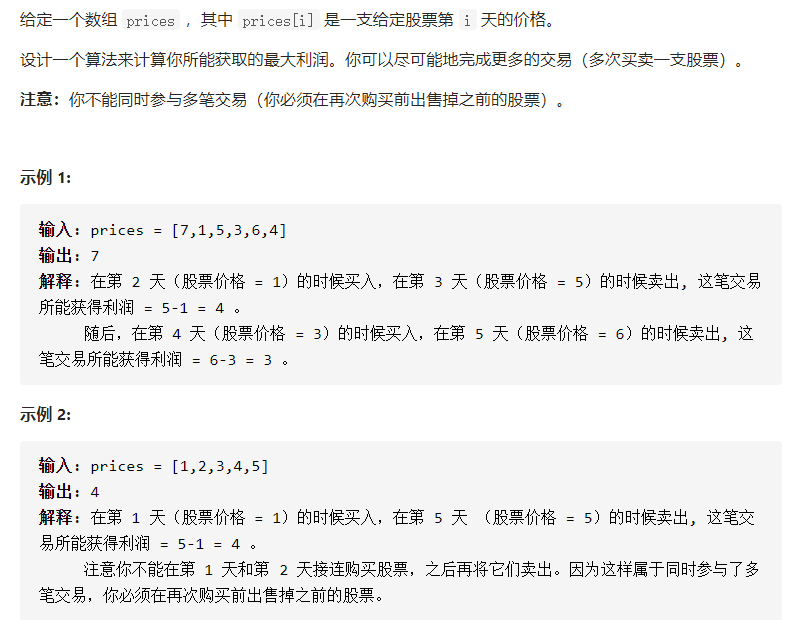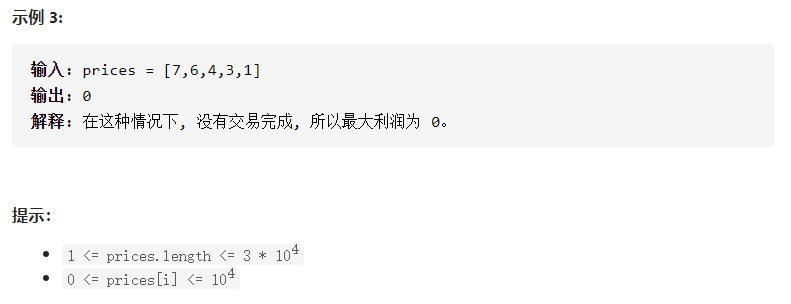前言
大家好,我是来自于「华为」的「程序员小熊」。今天给大家带来一道与「贪心算法」相关的题目,这道题同时也是字节、苹果和亚马逊等互联网大厂的面试题,即力扣上的第 122 题-买卖股票的最佳时机 II。
本文主要介绍「贪心」的策略来解答此题,供大家参考,希望对大家有所帮助。
买卖股票的最佳时机 II

题目描述

示例
解题思路
贪心算法是通过做出一系列选择来求出问题的最优解,在每个决策点,它做出当时看来最佳的选择。通过「局部最优」的选择,寄希望实现「全局最优解」。
「举例」
以 prices = [1,4,2,3,7] 为例子,求获得的最大利润,如下图示。

例子
遍历数组 prices,第一天一定买入;

第一次决策
尔后判断判断第二天的价格是否大于第一天,大于则卖出(局部最优);

价格递增时决策
卖出后,如果后面一天的价格小于当天的价格,则当天不买,防止亏本;

价格递减时决策
以此类推,其采用贪心策略买卖股票的完整决策过程如下动图示

决策的整个过程
Show me the Code
「C」
int maxProfit(int* prices, int pricesSize){
int ans = 0;
for (int i = 1; i < pricesSize; ++i) {
/* 后一天的价格比前一天高,则卖出(当前最佳策略) */
ans += fmax(0, prices[i] - prices[i - 1]);
}
return ans;
}
「C++」
int maxProfit(vector<int>& prices) {
int ans = 0;
for (int i = 1; i < prices.size(); ++i) {
ans += max(0, prices[i] - prices[i - 1]);
}
return ans;
}
「Java」
int maxProfit(int[] prices) {
int ans = 0;
for (int i = 1; i < prices.length; ++i) {
ans += Math.max(0, prices[i] - prices[i - 1]);
}
return ans;
}
「Python3」
def maxProfit(self, prices: List[int]) -> int:
ans = 0
for i in range(1, len(prices)):
ans += max(0, prices[i] - prices[i - 1])
return ans
「Golang」
func maxProfit(prices []int) int {
ans := 0
for i := 1; i < len(prices); i++ {
profit := prices[i] - prices[i-1]
if profit > 0 {
ans += profit
}
}
return ans
}
「复杂度分析」
时间复杂度:「O(n)」,其中 n 是数组的长度,需要遍历一遍数组。
空间复杂度:「O(1)」,未开辟额外的空间。
往期贪心算法精彩回顾
更多精彩
关注公众号「程序员小熊」